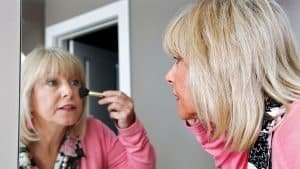How I Used This Summer to Inch Closer to Realising My Ideal Day

Several years ago, back when I was contemplating a change in careers, I did an exercise where I described my “ideal day.”
My description basically reads as follows: I spend my mornings writing, followed by some other, related creative activity: podcasting, giving a talk or interview, or attending a conference. The afternoons are devoted to a job that I love that brings home the bacon.
When friends call now – as they often do – to tell me that they’re tired of their job/industry/routine/life, I often begin by asking them to describe their ideal day. What I haven’t shared with them is that while my own description sits above my desk to remind me of my goals, I’ve not yet managed to achieve them.
Most days, I write for an hour in the early morning and then do “real work” for the rest of the day. Sometimes, I start at 5 a.m. to squeeze it all in.
That changed this summer. With a bit more time on my hands, I slowly began to inch myself closer to realizing my ideal day. This didn’t happen magically; it was deliberate. Here are three changes I instituted that helped:
Saying No
One of the main upsides to running your own business is that you get to maximize the activities you like and minimize the ones you don’t. Otherwise, why not just go work for someone else who tells you how to spend your time?
Now that my business is has been running for a few years, I am fortunate to have a high number of repeat clients. This means that I can spend less time selling and more time doing what I love – which is the design and delivery of workshops and coaching.
So, I made a conscious choice this summer to considerably reduce the amount of business development that I do. Once I let go of cold calls, in particular, I suddenly had a lot more time in my day to devote to other things.
Learning how to say “No” – as much to myself, as well as to others who were asking me to sell for them – was vital to this shift in behavior.
Taking Project Management Seriously
The second change I implemented was to get much smarter about managing my workload. I do a lot of work with universities, and the autumn tends to be my busiest time of the year for that work.
So, as my calendar for the next few months begins to fill up, I am making sure to adhere to one of the fundamental principles of project management – which is to always work backwards from your deadlines.
The basic idea here is quite simple: as soon as you have a deadline, work backwards so that you know exactly how much time you need to allocate to that project each month/week/day etc. to hit it.
As I tell my students, one important corollary to this old time management chestnut is to be sure that you block out your calendar to prepare for these deadlines. Otherwise, you’ll find yourself committing time to other projects and before you know it, you’ll be completely over-committed and stressed out.
It’s really hard for me to adhere to this principle, because my instinct is to always say “yes” and take on more work. But creating space to get “enough” work done and respecting that space is the only way to allocate time for other things you really value, like family, writing, and exercise.
Embracing a Portfolio Mindset
I’ve written a lot about how I’ve embraced a portfolio career in later life. But a portfolio career is much more than a variety of different revenue streams. It’s also a mindset.
A portfolio mindset means that when you’re doing something that is part of your portfolio but not necessarily an income-earner – in my case, writing and volunteer work fall into this category – you don’t berate yourself endlessly when you’re spending time on those activities.
This was an incredibly hard transition for me to make. I’m very rule-bound. So, if I decide that I will only spend one hour writing a day and eight hours “doing real work,” it’s really hard for me to break out of that routine.
But with more time on my hands this summer I found that I was better able to use my time to do a range of things that matter to me – even if I wasn’t earning money from them. The trick wasn’t finding the time. It was there. The trick was to re-frame that time as valuable and useful.
Writing with the Wrong Hand
All of which is a long way of saying that this summer I practiced what I call “writing with the wrong hand.” This is my shorthand for doing some things even when – and often especially when – they don’t feel comfortable.
My hope is that if I practice hard enough, some of these transitions will begin to feel routine. And then I will be that much closer to becoming my future self.
Let’s Have a Conversation:
Did this summer come with a bonus for you? Are you one step closer to enjoying your ideal day, every day? What’s stopping you? What can you do to remove the obstacles? Please share your thoughts and observations with the community!
Read More












